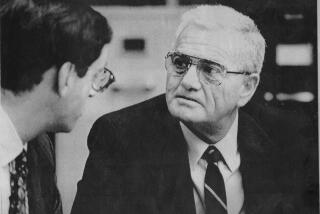Serial Rapist’s Conviction Was First to Involve DNA
- Share via
On Nov. 6, 1987, serial rapist Tommy Lee Andrews became the first American ever convicted in a case involving DNA evidence. He was sentenced to 22 years in prison for rape, aggravated battery and burglary.
The case against Andrews was simple and typical of most that involve DNA evidence. Police sent two samples to a New York laboratory for testing--semen left at the crime scene by the rapist and blood taken from Andrews.
The laboratory isolated DNA from each sample, then compared the two and found they matched.
The lab couldn’t match Andrews’ entire genetic code to the rapist’s--that would be technically impossible. But technicians could compare representative pieces of the two DNA samples that scientists know are highly variable in the human population.
It’s not unusual for two randomly selected people to have the same DNA pattern in one of those genetic locations, which are known as variable-number tandem repeats. But it is rare for unrelated people to share the same DNA in two such areas.
And as the number of DNA regions sampled increases, so does the rarity of a person’s pattern. Finding a pair of people with the same DNA pattern in four places--the minimum number of DNA regions that labs commonly analyze--is just about unheard of, except in cases of identical twins. When you get up to six DNA segments, a person’s pattern is as unique as a fingerprint.
“That’s where we’re heading with these DNA profiles,” said Bruce Weir, a professor of statistics at North Carolina State University in Raleigh.
More to Read
Sign up for Essential California
The most important California stories and recommendations in your inbox every morning.
You may occasionally receive promotional content from the Los Angeles Times.













